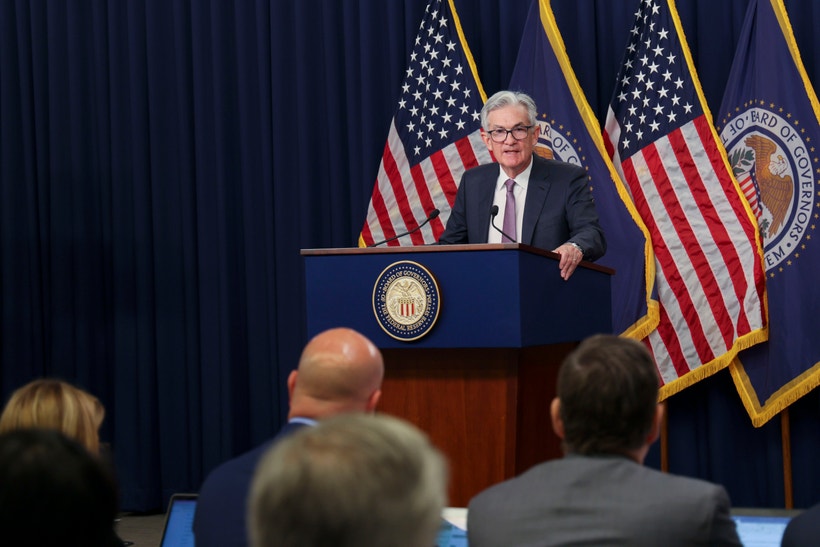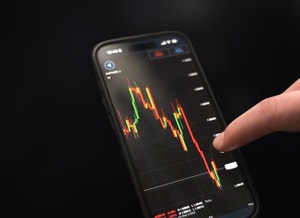Aggressive Fed rate cut shakes markets: a comprehensive overview
The Fed's unexpected 50 bps rate cut stirred markets, impacting currencies, stocks, gold, and Treasury yields. Traders must navigate the effects on USD/JPY, EUR/USD, and more as the Fed targets 2% inflation.

Key points
- Fed cuts rates by 50 bps, first cut since March 2020
- US dollar rebounds after initial decline post-announcement
- S&P 500 and gold see volatility, long-term rate projection at 2.9%
- 10-year Treasury yield rises to 3.7%, 2-year to 3.63%
- Fed forecasts additional 100 bps rate cuts by end of 2024
Fed announces 50 bps rate cut signaling aggressive path to inflation target
Today’s highly anticipated Federal Open Market Committee (FOMC) meeting resulted in a staggering rate cut decision of 50 bps despite speculation of a more conservative cut of 25 bps—their first rate cut since March 2020. This cut comes with greater confidence from the Fed of inflation approaching its target rate of 2% and was balanced with the risks of achieving its employment goals. By the end of 2024, a total of 100 bps of rate cuts is forecasted by policymakers, with the trajectory of two more 25 bps cuts as of 2024. For 2025, more percentage point of cuts is forecasted, followed by a final cut of 50 bps in 2026.
US dollar rebounds against major pairs after initial nosedive
It was looking grim for the greenback shortly after the rate cut announcement, with the US dollar’s partnering currency pairs taking a large hit. This pattern ensued post Powell’s announcement with a strong decline in the dollar’s power against the yen, euro, pound and Australian dollar, followed by a rebound period. These dollar rebounds look like USD/JPY at 142.109, EUR/USD at 1.11248, GBP/USD at 1.32144, and AUD/USD at 0.67688.
S&P 500 and gold struggle after long-term rate projection shifts higher
As investors are digesting today’s Fed decision, gold prices and US stocks remain volatile. After nearly hitting record highs of $2600, gold fell back to $2563, erasing its previous gains. US stocks closed lower as well, with the S&P and the Nasdaq 100 losing 0.3%, while the Dow fell 102 points. Officials have once more increased their estimate for the long-term federal funds rate, adjusting it to 2.9% from the previous 2.8%. Powell also mentioned his belief that interest rates are unlikely to revert to the extremely low levels observed in the years leading up to the pandemic. This volatility reflects the market’s mixed sentiments regarding today’s rate cut decision, and the potential caution of investors moving forward with regards to lower borrowing costs versus economic growth.
Treasury yields rise as bond traders recalibrate expectations
Both the 2- and 10-year US Treasury Bond Note Yields are up following market expectations. The 10-yr is up to 3.7%, a rebound from its almost 15-month low of 3.62%. Additionally, the 2-year is up to 3.63. These movements are significant as they signal investor sentiment about future economic conditions, inflation, and the Federal Reserve's monetary policy. While the current rise in yields reflects a more optimistic economic outlook and a strong labor market, it also underscores the market's sensitivity to inflation and Federal Reserve policies.
Future of US dollar
Despite Powell’s assurance that a rate cut of this magnitude is not the new normal, the outlook for the US dollar is on a complex trajectory. The Fed's commitment to achieving a 2% inflation target—forecasting an additional 100 bps of rate cuts by the end of 2024, followed by further reductions in 2025 and 2026—suggests that the US dollar may face continued pressure. However, the dollar's recent resilience indicates that investors may be cautiously optimistic about the US economy's ability to manage inflation and employment goals despite lower interest rates. Moving forward, the US dollar's performance will likely hinge on the market's perception of the Fed's ability to balance these objectives, economic data, and global financial dynamics.
How to trade US dollar
- Open an account to get started, or practice on a demo account
- Choose your forex trading platform
- Open, monitor, and close positions on USD pairs
Trading forex requires an account with a forex provider like tastyfx. Many traders also watch major forex pairs like EUR/USD and USD/JPY for potential opportunities based on economic events such as inflation releases or interest rate decisions. Economic events can produce more volatility for forex pairs, which can mean greater potential profits and losses as risks can increase at these times.
You can help develop your forex trading strategies using resources like tastyfx’s YouTube channel. Our curated playlists can help you stay up to date on current markets and understanding key terms. Once your strategy is developed, you can follow the above steps to opening an account and getting started trading forex.
Your profit or loss is calculated according to your full position size. Leverage will magnify both your profits and losses. It’s important to manage your risks carefully as losses can exceed your deposit. Ensure you understand the risks and benefits associated with trading leveraged products before you start trading with them. Trade using money you’re comfortable losing.






